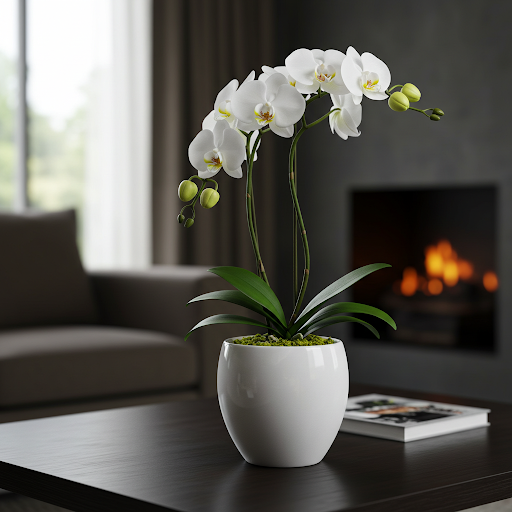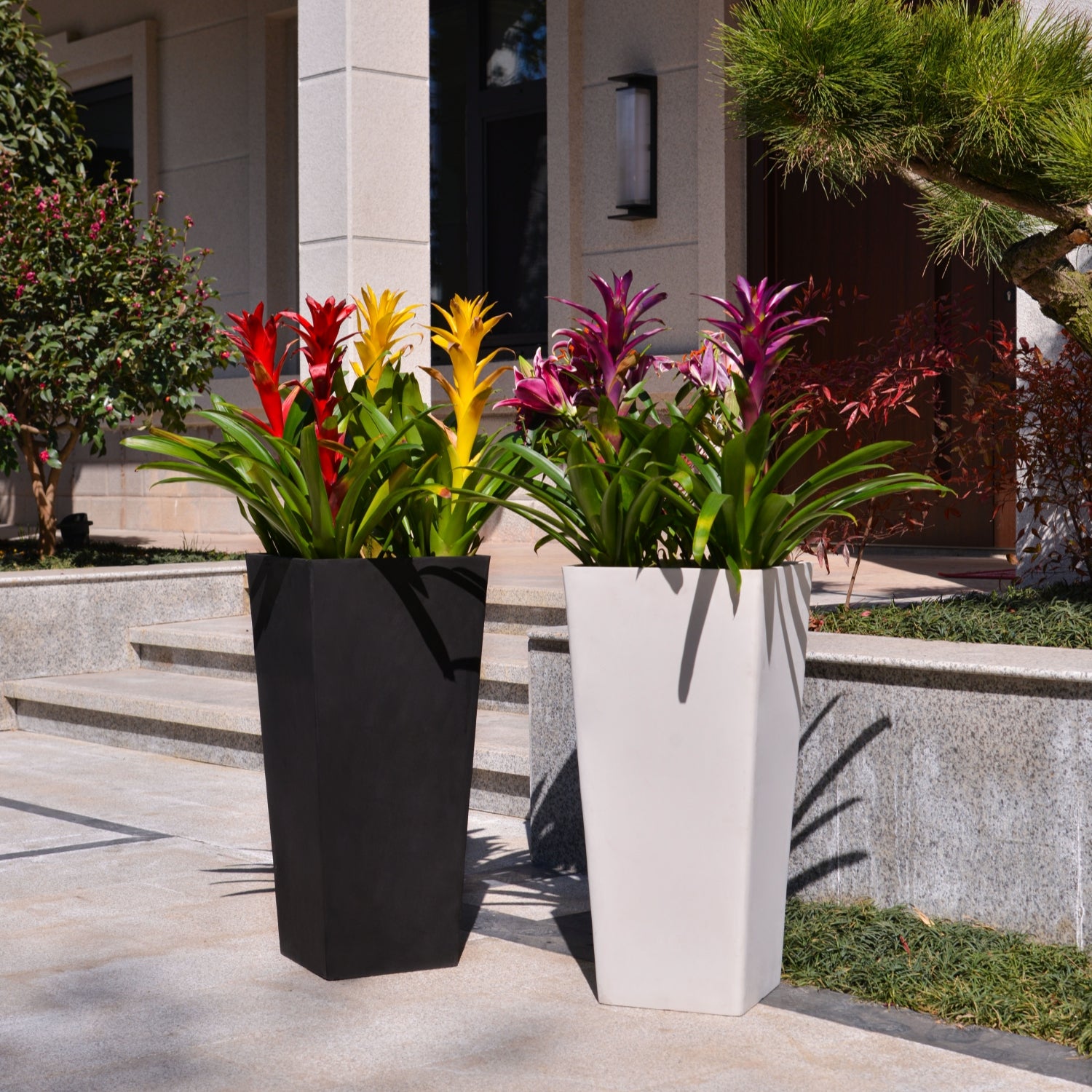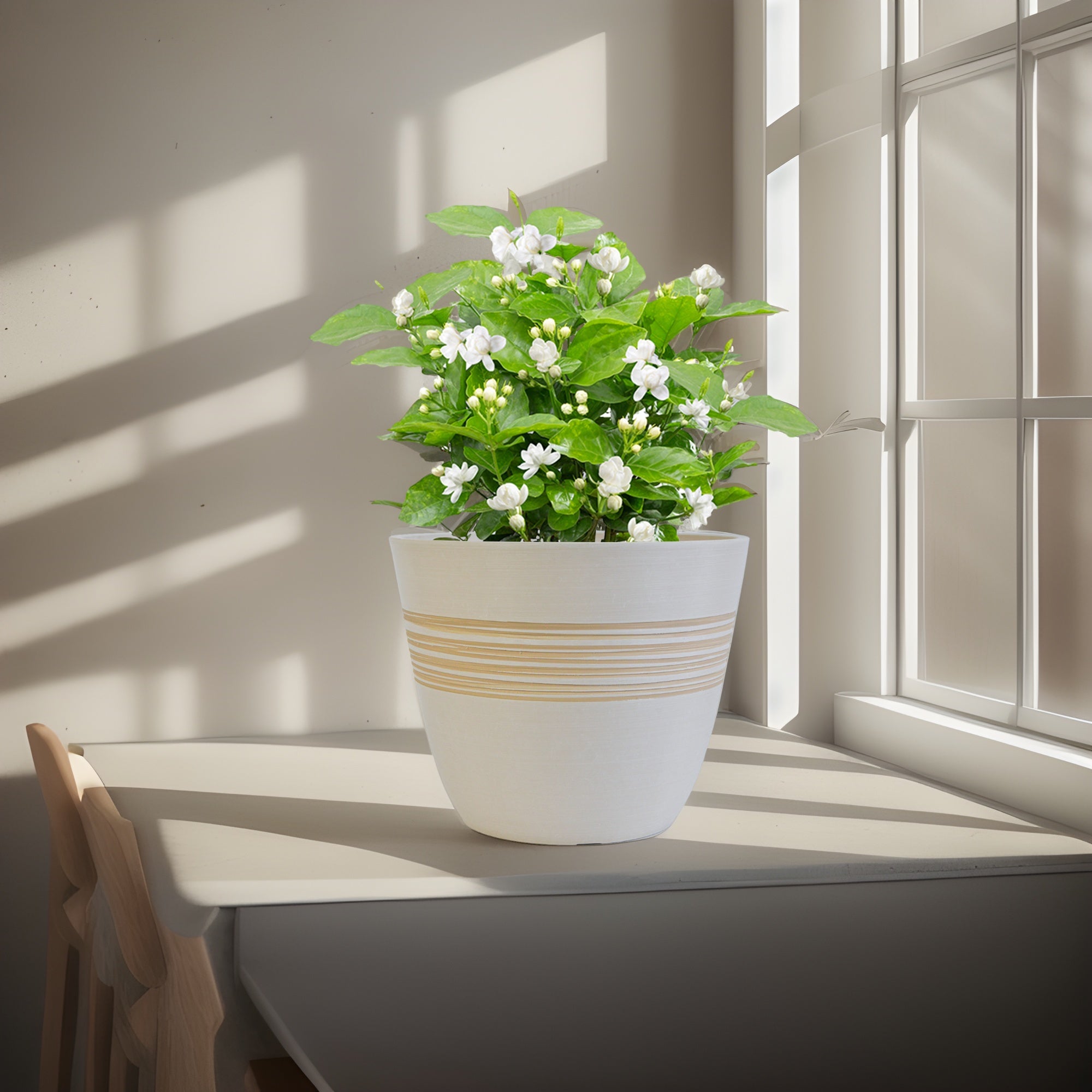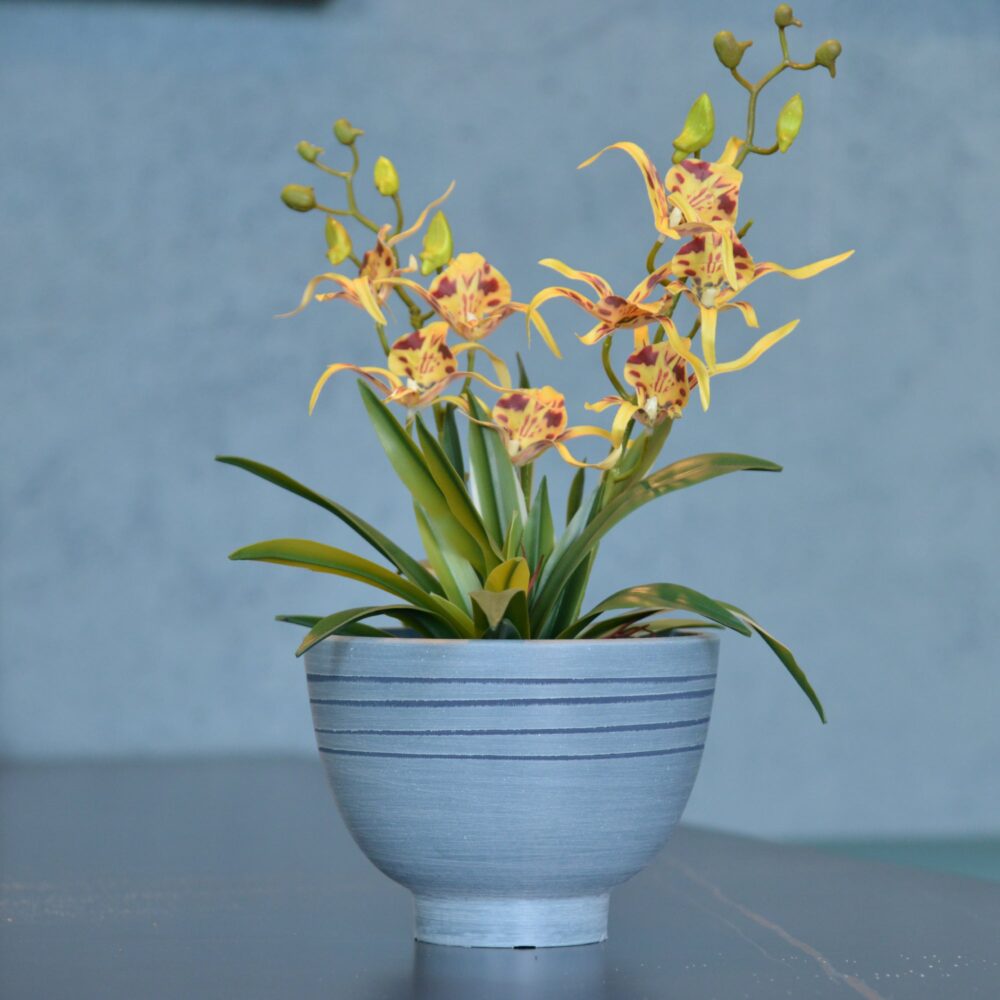Orchids Indoors: The Ultimate Guide to Growing Exotic Blooms at Home
Want to bring the captivating beauty and elegance of Orchid flowers into your home? While often perceived as delicate and challenging, many Orchids can be successfully grown indoors with the right knowledge and care. These exotic and diverse flowering plants, belonging to the family Orchidaceae, are prized for their intricate blooms, long-lasting flowers, and fascinating variety. This comprehensive guide will demystify indoor orchid growing, covering everything from choosing the right orchids to pot selection and essential care tips for thriving indoor orchids.

Orchid flowers
Can Orchids Flourish Indoors?
Yes, many types of Orchids can flourish indoors and bring a touch of the tropics to your home. The key to success lies in selecting orchid varieties that are well-suited to indoor conditions and providing them with the right environment. While some orchids are more demanding than others, many popular types are surprisingly adaptable and rewarding for indoor growers.
Ideal Indoor Growing Conditions (Mimicking their Natural Habitat):
- Orchid Types for Beginners: For indoor growing, especially for beginners, focus on beginner-friendly orchid types such as:
- Phalaenopsis Orchids (Moth Orchids): The most popular and easiest orchid for beginners, known for their long-lasting blooms and tolerance of indoor conditions.
- Cattleya Orchids: Classic orchids with large, fragrant, and showy flowers. Choose compact or smaller Cattleya varieties for indoor growing.
- Dendrobium Orchids: Diverse group, some species are easier than others. Dendrobium phalaenopsis types are generally more beginner-friendly and adaptable to indoor conditions.
- Paphiopedilum Orchids (Lady Slipper Orchids): Unique pouch-like flowers, often shade-tolerant and suitable for indoor growing.
- Oncidium Orchids: Known for their sprays of many small, often fragrant flowers. ‘Twinkle’ and other smaller Oncidium types are good for indoors.
- Light: Orchids need bright, indirect light. The specific light requirements vary depending on the orchid type.
- Phalaenopsis and Paphiopedilum: Tolerate lower light conditions, East or North-facing windows are suitable. Avoid direct afternoon sun.
- Cattleya, Dendrobium, and Oncidium: Prefer brighter indirect light, South or West-facing windows with filtered light (sheer curtains) are ideal. Too little light will result in poor blooming or no blooms at all. Supplemental grow lights can be beneficial, especially in winter or for darker homes, to ensure adequate light for flowering.
- Temperature: Most indoor orchids thrive in average room temperatures comfortable for humans. Daytime temperatures of 70-80°F (21-27°C) and nighttime temperatures of 60-70°F (15-21°C) are generally suitable. A slight temperature drop at night can encourage blooming for some types. Avoid extreme temperature fluctuations and drafts.
- Humidity: Orchids generally prefer higher humidity than typical indoor air, especially during winter heating. Aim for 50-70% humidity. Increase humidity by:
- Pebble trays: Place pots on trays filled with pebbles and water (water level below pot base).
- Humidifiers: Use a room humidifier, especially during dry seasons.
- Grouping plants: Grouping orchids together can create a more humid microclimate.
- Misting: Misting leaves lightly in the morning (allow leaves to dry by evening to prevent rot).
- Air Circulation: Good air circulation is crucial to prevent fungal diseases and rot, especially in humid conditions. Ensure good ventilation in the room. A gentle fan can help improve air circulation, but avoid direct drafts.
Planting Orchids Indoors:
- Potting Mix – Not Soil: Orchids are typically NOT planted in regular potting soil. They are often epiphytes in nature (growing on trees), and their roots need air circulation and drainage. Use specialized orchid potting mixes, which are typically coarse and well-draining, such as:
- Orchid Bark Mix: Made primarily of bark (fir bark, pine bark), provides excellent drainage and aeration. Good for epiphytic orchids like Phalaenopsis, Cattleya, Dendrobium, Oncidium.
- Sphagnum Moss Mix: Retains more moisture than bark, suitable for orchids that prefer more moisture, like Paphiopedilums. Can be used alone or mixed with bark.
- Clay Pellets/LECA (Lightweight Expanded Clay Aggregate): Inert, excellent drainage and aeration, often used in hydroponic or semi-hydroponic orchid setups.
- Potting Time: Repot orchids every 1-2 years, or when the potting mix decomposes, usually in spring or after blooming. Repotting provides fresh media and prevents root rot.
Choosing the Right Pots for Indoor Orchids:
- Suitable Pot Types: Drainage and aeration are paramount for orchid pots.
- Orchid Pots (Slotted Pots): Plastic or terracotta pots specifically designed for orchids, with many drainage holes and side slits to maximize air circulation to the roots. Excellent for epiphytic orchids.
- Terracotta Pots: Porous clay provides good drainage and aeration, helps prevent overwatering. Can dry out faster, requiring more frequent watering.
- Plastic Pots (with Drainage): Retain moisture longer than terracotta. Ensure they have ample drainage holes. Clear plastic pots are sometimes used for Phalaenopsis to allow light to reach the roots (which are photosynthetic in some orchids).
- Mounts (for certain orchids): Some orchids, like Vandas, are often grown mounted on wood or cork bark, mimicking their epiphytic nature, with exposed roots. Less common for beginners.
- Drainage: Ensure excellent drainage in any pot you choose. Orchids are highly susceptible to root rot in soggy conditions.
- Pot Size: Choose a pot that is just large enough to accommodate the root system. Orchids generally prefer to be slightly root-bound. Overpotting (using too large a pot) can lead to excess moisture retention and root problems. When repotting, typically move up only slightly in pot size.
Essential Care Tips for Blooming Indoor Orchids:
- Watering Technique: Water thoroughly, then let the potting mix dry out somewhat before watering again. The frequency depends on the orchid type, pot type, potting mix, and environmental conditions.
- “Soak and Dry” Method: A common approach is to thoroughly water the orchid until water runs freely from the drainage holes, then allow the potting mix to approach dryness before watering again.
- Observe Root Color (for some orchids like Phalaenopsis in clear pots): Silvery roots often indicate dryness, green roots indicate moisture.
- Avoid Overwatering: More orchids are killed by overwatering than underwatering. Root rot is a major concern.
- Water Quality: Use room temperature water, preferably rainwater, distilled water, or reverse osmosis water, as orchids can be sensitive to salts and minerals in tap water.
- Fertilizing: Orchids are not heavy feeders. Fertilize sparingly and regularly during the growing season (spring and summer) when they are actively growing and blooming. Use a special orchid fertilizer diluted to half or quarter strength, according to package instructions. Fertilize every 2-4 weeks during active growth. Reduce or stop fertilizing during the dormant or resting period after blooming. “Weakly, weekly” is a common fertilizing approach – using a very diluted fertilizer solution more frequently.
- Repotting Schedule: Repot orchids every 1-2 years or when the potting mix decomposes (becomes mushy, breaks down), or the plant becomes root-bound. Repotting is important for root health and to replenish the potting mix. Spring or after blooming is generally the best time to repot.
- Pruning: Prune to remove spent flower spikes after blooming. Cut back flower spikes of Phalaenopsis above a node to potentially encourage reblooming from the same spike (though spikes will eventually decline). Remove any yellow or brown leaves.
- Encouraging Reblooming: To encourage orchids to rebloom:
- Provide adequate light.
- Temperature drop: A slight nighttime temperature drop (10-15°F) can stimulate blooming in some orchids.
- Rest Period: After blooming, many orchids need a rest or dormant period with slightly reduced watering and no fertilizer to initiate new flower spikes. Research the specific needs of your orchid type.
- Pest and Disease Control: Monitor orchids for pests like mealybugs, scale, spider mites, and aphids. Good air circulation and hygiene can help prevent problems. Treat infestations promptly with insecticidal soap, horticultural oil, or rubbing alcohol. Fungal and bacterial diseases can occur, especially with poor air circulation or overwatering. Ensure good ventilation and proper watering practices.

Orchid flowers
Popular Orchid Genera for Indoor Growing:
- Phalaenopsis (Moth Orchids): Beginner-friendly, long-lasting blooms, various colors and sizes.
- Cattleya: Classic, showy, fragrant blooms, need brighter light.
- Dendrobium: Diverse, Dendrobium phalaenopsis types are easier indoors, sprays of flowers.
- Paphiopedilum (Lady Slipper Orchids): Unique pouch-like flowers, shade-tolerant, elegant.
- Oncidium: Sprays of many small, often fragrant flowers, ‘Twinkle’ types are popular.
- Miltonia (Pansy Orchids): Flat, pansy-like flowers, fragrant, prefer cooler temperatures.
- Brassavola: Fragrant night-blooming orchids, star-shaped flowers, easier to grow than some Cattleyas.
In Summary:
Growing orchids indoors is a rewarding journey that allows you to witness the captivating beauty and intricate details of these exotic flowers up close. By choosing beginner-friendly orchid types like Phalaenopsis, providing bright, indirect light (possibly with grow lights), using specialized orchid potting mix in well-draining pots, mastering the “soak and dry” watering method, ensuring good humidity and air circulation, and fertilizing sparingly during the growing season, you can successfully cultivate thriving and blooming orchids within your home and enjoy their elegant presence year after year.
For more detailed botanical information and to explore the vast world of orchid species and genera, you can visit the Wikipedia page on Orchidaceae.
Important Note: Orchid care can vary depending on the specific type of orchid. Always research the specific needs of your orchid variety for best results. While orchids are generally considered non-toxic, it’s always wise to keep houseplants out of reach of pets and small children who might be tempted to chew on them.
GreenShip 27inch Tall Planters for Porch, Large Outdoor Planter Pots with Drainage Hole
By greenship-seo|2025-04-10T06:27:21+00:00April 7, 2025|Categories: Hand-carving Series|Tags: Decorative Flower Pots|
Modern Plant Pots with Drainage – Indoor & Outdoor Use (6″ Widths)
By greenship-seo|2025-04-10T06:29:43+00:00February 6, 2025|Categories: Hand-carving Series|Tags: Decorative Flower Pots|
KC2-21G
By greenship|2024-08-13T06:19:08+00:00August 13, 2024|Categories: Hand-carving Series|
Planter for Indoor Outdoor Plants, Set of 2 Modern Decorative Plant Pots with Drainage Hole, Decorative Flower Pots
By greenship-seo|2025-04-10T07:46:01+00:00January 9, 2025|Categories: Hand-carving Series|Tags: Decorative Flower Pots, Self-Watering Pots|
KC3-14A
By greenship|2024-08-16T06:26:30+00:00August 16, 2024|Categories: Hand-carving Series|
8 inch/10 inch Planter Indoor Plants, 2 Pack Modern Decorative Plant Pots with Drainage Hole, Cute Bowl Shape Flower Pots
By greenship-seo|2025-04-10T08:03:42+00:00January 9, 2025|Categories: Hand-carving Series|Tags: Decorative Flower Pots, Self-Watering Pots|






